
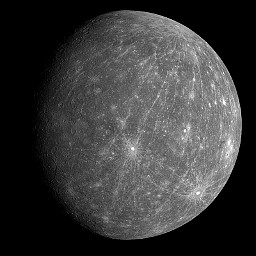 | Mercury, the innermost planet. | source |
 | Venus, second from the Sun. | source |
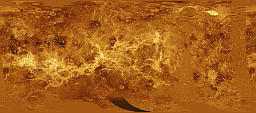 | A radar map of Venus. | source |
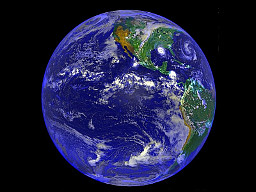 | Earth; hurricane Andrew is about to make landfall. | source |
 | A panorama of the meteor crater near Winslow, AZ. | |
 | An aurora on Earth. | source |
 | Earth's Moon (Luna). | source |
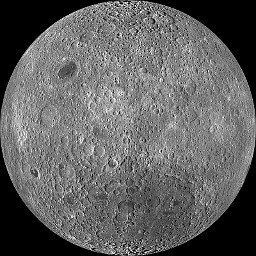 | The far side of the Moon. | source |
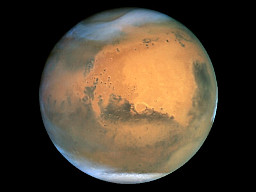 | Mars, closest of the outer planets. | source |
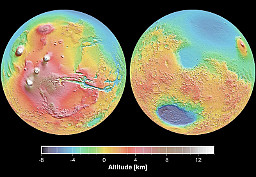 | A radar map of Mars. | source |
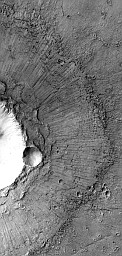 | Impact ejecta on Mars. | source |
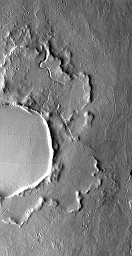 | Volcanic rilles (trenches) on Ascraeus Mons, on Mars. | source |
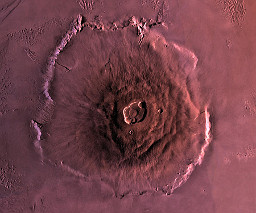 | Lava flows from Olympus Mons on Mars (not true color). | source |
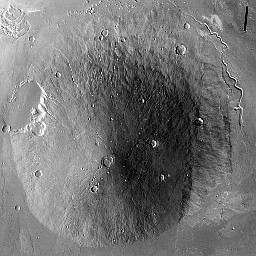 | Hecate Thola lava dome on Mars. | source |
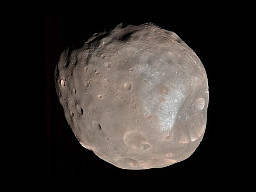 | Phobos, moon of Mars. | source |
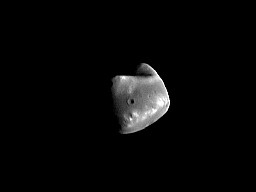 | Deimos, moon of Mars. | source |
 | Ceres, a dwarf planet, largest object in the asteroid belt. | source |
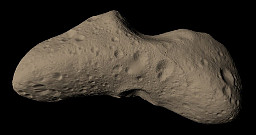 | Eros, an asteroid. | source |
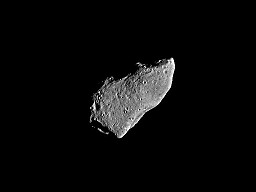 | Gaspra, an asteroid. | source |
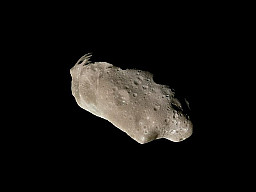 | Ida, an asteroid. | source |
 | Lutetia, an asteroid. | source |
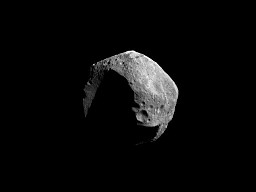 | Mathilde, an asteroid. | source |
 | Vesta, an asteroid (south pole). | source |
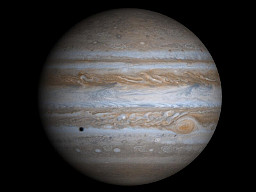 | Jupiter, the largest planet. | source |
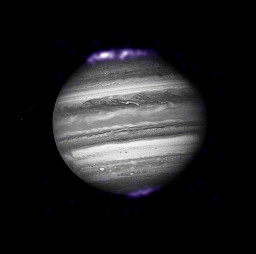 | X-ray auroras on Jupiter. | source |
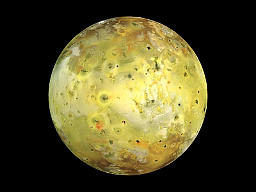 | Io, one of the Galilean moons of Jupiter. | source |
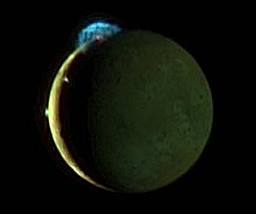 | Tvashtar, a volcano on Io (color enhanced). | source |
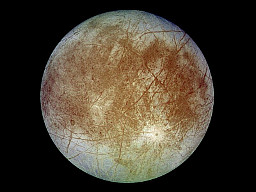 | Europa, one of the Galilean moons of Jupiter. | source |
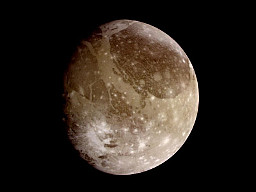 | Ganymede, one of the Galilean moons of Jupiter. | source |
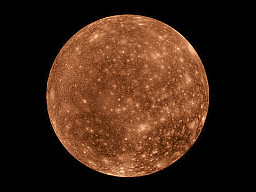 | Callisto, one of the Galilean moons of Jupiter. | source |
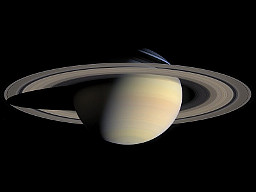 | Saturn, sixth planet from the Sun. | source |
 | Ultraviolet auroras on Saturn. | source |
 | Mimas, moon of Saturn. | source |
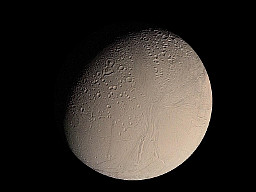 | Enceladus, moon of Saturn. | source |
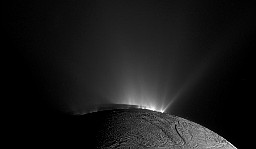 | Geysers of Enceladus. | source |
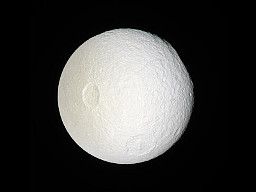 | Tethys, moon of Saturn. | source |
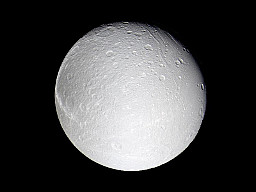 | Dione, moon of Saturn. | source |
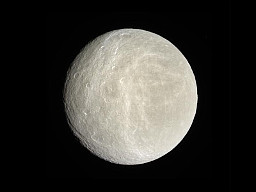 | Rhea, moon of Saturn. | source |
 | Hyperion, moon of Saturn. | source |
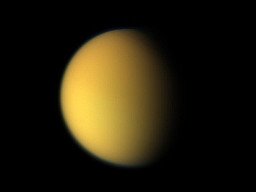 | Titan, moon of Saturn. | source |
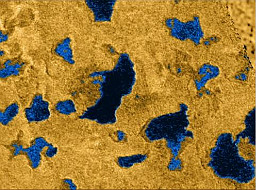 | Radar image of methane seas on Titan. | source |
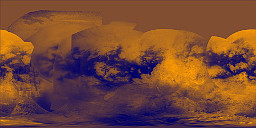 | A radar map of Titan. | source |
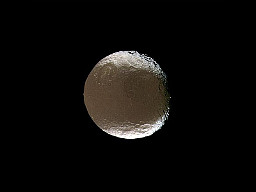 | Iapetus, moon of Saturn. | source |
 | Uranus, the penultimate planet. | source |
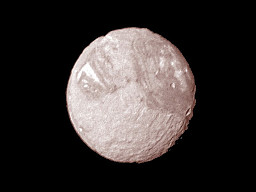 | Miranda, moon of Uranus. | source |
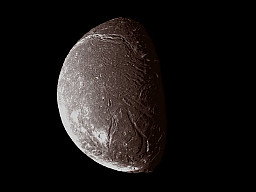 | Ariel, moon of Uranus. | source |
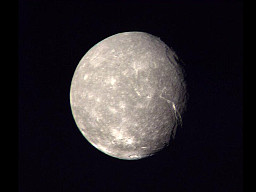 | Titania, moon of Uranus. | source |
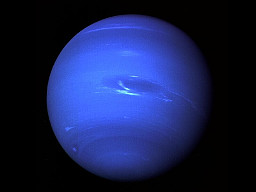 | Neptune, furthest of the true planets. | source |
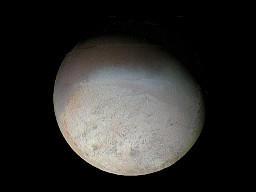 | Triton, moon of Neptune. | source |
 | Comet Hartley 2. | source |
 | Pluto, dwarf planet. | source |
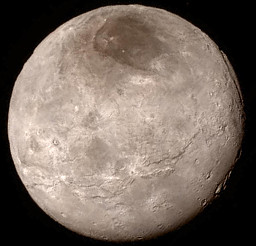 | Charon, moon of Pluto. | source |
 | Comet Tempel 1. | source |
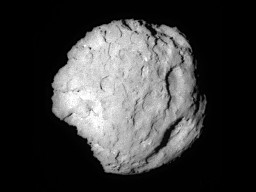 | Comet Wild 2. | source |
 | The planets to scale. | source |
 | The moons to scale. | source |
 | The orbits of the outer planets. | source |
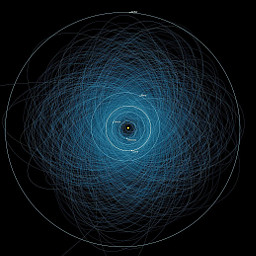 | The orbits of over 1400 potentially hazardous asteroids known as of early 2013. | source |
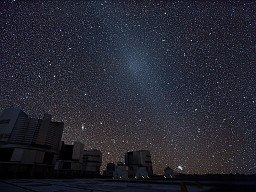 | Some of the smallest constituents of the Solar System are dust particles. | source |
Yellow and orange coloration are largely due to sulfur compounds, although in Titan's case its coloration comes from a heavy hydrocarbon haze. Jupiter's ammonia content also affects its color, and can be seen in the greenish tints reflected from the night sides of the Galilean moons. Methane absorbs light in the red and yellow wavelengths, leading to Uranus' (with less methane) and Neptune's (with more methane) coloration.Also look closely for surface features which might give clues to past tectonic, volcanic, geyser or meteor activity. Large scale mountain ranges are indicative of tectonic plate collision (ie., the Rocky or Himalayan ranges). Distinguish between volcanic and meteor craters by looking for impact debris and ejecta (some craters could be calderas). Look for volcanic rilles (trenches), lava flows and domes, as well as ridges and scarps (cliffs) formed by cooling and shrinking. Note the presence of liquids, dust or ice, and evidence of major collisions. What do these tell you about the surface history?
To get a feel for how difficult this business is, read this analysis of Europa.
(View Cosmos DVD 4, episode 6, on Voyager at Europa.)This image shows zodiacal light scattered by solar system dust. It also shows the Milky Way (home of our solar system), and that the plane of our solar system is not parallel to the plane of our galaxy.(View Cosmos DVD 3, episode 4, comet simulations, on the Tunguska Event.)
A meteoroid is a small (< 100 m) piece of interplanetary debris, often found along the orbits of comets. A meteor is the bright streak that meteoroids make as they burn up in the atmosphere. A meteorite is a meteoroid that survives the atmosphere to hit the surface. Here is a movie of the Peekskill fireball (.95 Mb) (source).
The Minor Planet Center has produced animations of small objects in the Solar System. The TNOs (Trans-Neptunian Objects) in the outer Solar System animation are also known as Kuiper Belt objects.
For any characterization other than meteoric, find NASA images which support your categories; include them (with source references)
in your portfolio. Annotate the pictures, circling and identifying the features which support your categorization.
Planetary magnetic fields are believed to be the product of rotation and liquid conducting fluids in their cores.
We have been able to measure the magnetic fields of some of these bodies using space probes:
Portfolio Exercise:
Categorize each body in the list above as to the distinguishing feature(s) of its landscape: tectonic, volcanic, geyser or meteoric.
You may have some bodies in which multiple features are present.
Body Magnetic Field (Earth) Sun 2 Mercury 0.011 Venus 0.001 Earth 1 Mars 0.001 Jupiter 13.89 Saturn 0.67 Uranus 0.74 Neptune 0.43
The designation "(Earth)", here and below, indicates that the number is a multiple of Earth's value.
When charged particles from the Solar wind encounter Earth's magnetic fields, the fields are distorted, and energy is transferred into the atmosphere,
causing the electrons in Oxygen and Nitrogen atoms to transition to a higher energy level. When they relax, photons are emitted,
which we see as aurora. Molecular Oxygen emits photons in the green part of the optical spectrum,
while molecular Nitrogen emits in the blue. Atomic Oxygen exists at high altitudes; it emits red photons.
There is a good movie of terrestrial auroras (2.43 Mb) from the POLAR mission (source), and another taken from the International Space Station (reported at SpaceWeather.com on September 22, 2011). Note that more intense magnetic fields result in higher energy photons; hence Saturn's UV auroras, and Jupiter's x-ray auroras.
wavelength of maximum thermal outputAngstroms = 2.9 * 107 Angstroms / temperature Kwe can measure the effective (black body) temperature of many of these bodies. Using Stefan's Law:
power emitted or absorbed per unit area = 5.67 * 10-8 W/K4 * temperature4and the fact that intensity decreases with the square of the distance, we can compare the intensity of the radiation they receive to that which Earth receives (1365 W/m2), and the ratio of their output to input intensity Iout/Iin (for moons, we include the input both from the Sun and from their host planet).
In addition, for some of these bodies we have been able to measure the surface temperature using space probes. Using these temperatures, we can learn something about possible atmospheres. If the average molecular speed of a gas:
average molecular speed = 157 * (temperature / molecular weightH = 1)1/2is less than 1/6 of the planet's escape velocity at the surface:
escape velocity = (2 * 6.674 * 10-11m3/(kg s2) * mass / radius)1/2there is a high probability that the gas still exists in an atmosphere near the surface. We can use these two equations to find the minimum molecular weight of any atmosphere for these bodies (the majority atmospheric component has been provided for comparison purposes, when known):
| Body | Teff K | ISun (Earth) | Iout/Iin | Max Tsurface | Min Mol. Wt. | Major Atmos. Comp. | Surface Atmos. Pressure (Earth) |
|---|---|---|---|---|---|---|---|
| Sun | 5777 | 0 | H | ||||
| Mercury | 533 | 6.674 | 1.005 | 700 | 34 | 2 * 10-12 | |
| Venus | 227 | 1.911 | 0.2308 | 735 | 6 | C O2 | 90 |
| Earth | 255 | 1 | 0.7025 | 331 | 2 | N2 | 1 |
| The Moon | 387 | 1 | 3.727 | 396 | 62 | 1 * 10-12 | |
| Mars | 217 | 0.4308 | 0.8553 | 268 | 9 | C O2 | .006 |
| Jupiter | 125 | 0.03694 | 1.098 | 0 | H2 | ||
| Io | 128 | 0.03694 | 1.198 | 17 | |||
| Europa | 128 | 0.03694 | 1.204 | 27 | 10-7 | ||
| Ganymede | 128 | 0.03694 | 1.206 | 15 | |||
| Callisto | 128 | 0.03694 | 1.207 | 19 | |||
| Saturn | 95 | 0.0101 | 1.231 | 0 | H2 | ||
| Titan | 85 | 0.0101 | 0.7883 | 94 | 11 | N2 | 1.6 |
| Uranus | 57 | 0.002715 | 0.646 | 0 | H2 | ||
| Miranda | 86 | 0.002715 | 3.327 | 2044 | |||
| Ariel | 84 | 0.002715 | 3.038 | 239 | |||
| Neptune | 59 | 0.001106 | 1.82 | 0 | H2 | ||
| Triton | 38 | 0.001106 | 0.3126 | 15 | N2 | 1.4 * 10-5 |
"I" denotes intensity. The closer Iout/Iin is to 1, the nearer the body is to being in thermal equilibrium; values less than one indicate the body is warming (within the accuracy of the data, and Wien's and Stefan's laws, which are both approximations).
Some possible atmospheric components of interest are:
| Atom or Molecule | Molecular Weight |
|---|---|
| H2 | 2 |
| He | 4 |
| C H4 (methane) | 16 |
| N H3 (ammonia) | 17 |
| H2 O | 18 |
| C O | 28 |
| N2 | 28 |
| C2 H6 (ethane) | 30 |
| O2 | 32 |
| Ar | 40 |
| C O2 | 44 |
| C3 H8 (propane) | 44 |

(View Cosmos DVD 4, episode 6, on Jupiter, the Red Spot and Neptune.)After viewing these large-scale weather patterns on various planets, it is interesting to observe something much smaller on Earth and on Mars:
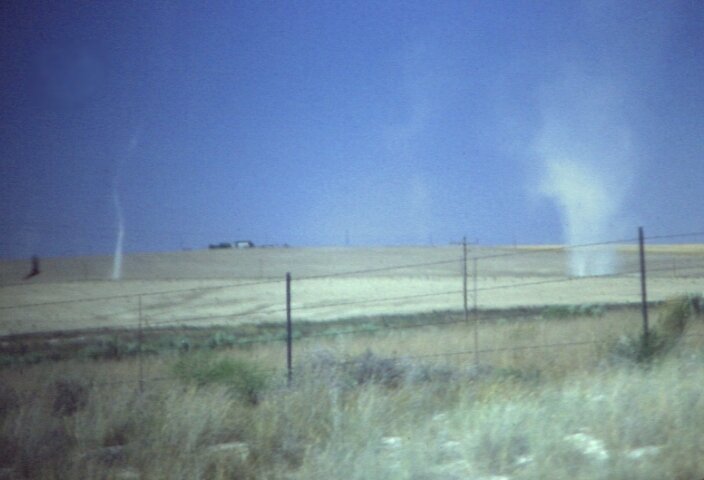

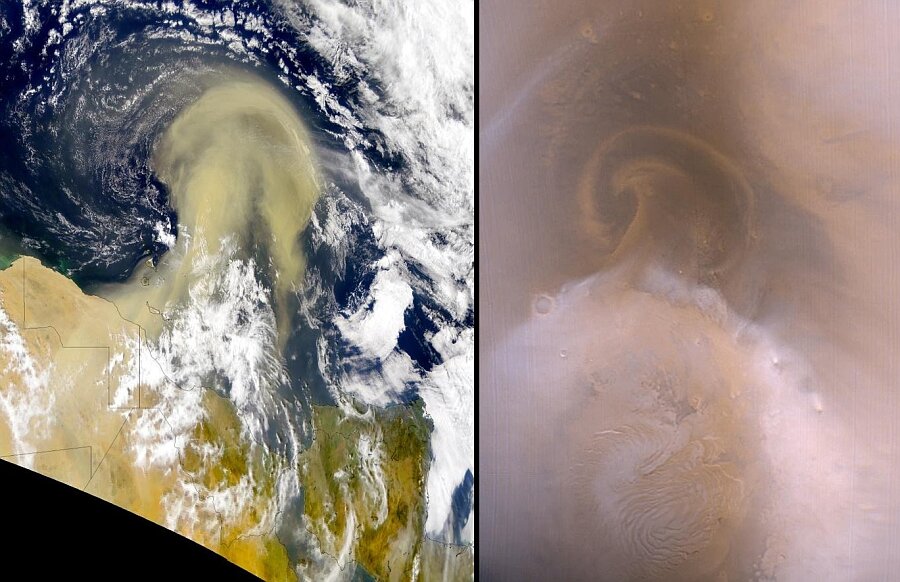
Dust is responsible for heat transport on Mars much as water is here on Earth.
Gravity Waves are seldom noticed in action because of their long periods; this movie (4 Mb) is a time lapse over 40 minutes. (source)
| Material | Melting Point (K) |
|---|---|
| Iron | 1808 |
| Silicon | 1684 |
| Ice | 273 |
| Ammonia | 195 |
| Methane | 91 |
So we have gas giants beyond the so-called snow line (beyond which water freezes), and rocky planets inside.
AU Microscopii is a red dwarf star approximately 12 million years old with a debris disc:

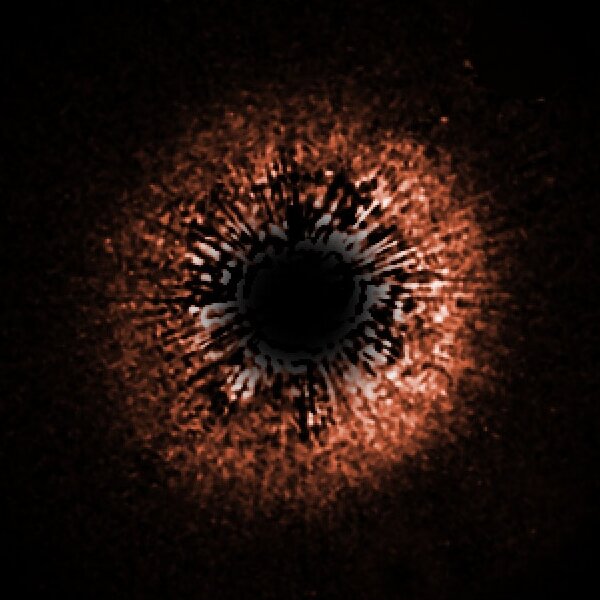
In comparison, the Kuiper Belt (home to short period comets) extends to about 50 AU from the Sun. The Oort Cloud (home to long period comets) has a radius of approximately 100000 AU. Eta Corvi has been observed to possess a region similar to the Kuiper Belt.
The mass of Comet Halley is about 1014 kg. It is about 40% water and about 20% organic compounds. Assuming that it is an average comet, and that comets were responsible for the presence of water on the Earth, we can compute the frequency of cometary impact in the Earth's early history. These impacts occurred mainly during a period of about 200 million years, approximately 4 billion years ago. If the total amount of water on the Earth is 1.65 * 1021 kg, it would have taken 41.25 million cometary impacts, or an average of about 5 impacts a year. These impacts would have deposited a further 8.25 * 1020 kg of organic material.Here is a Hubble animation revealing a protoplanetary disc (.62 Mb) in the Orion Nebula (source). Note that during formation, accretion and fragmentation are both occurring, as well as frequent collisions.The ratio of Deuterium (2H) to Hydrogen (1H) in the Earth's oceans has been shown to be substantially the same as that in at least one Kuiper Belt comet (103P/Hartley 2).More recently, the Rosetta spacecraft has shown that another Kuiper Belt comet (67P/Churyumov-Gerasimenko) has a very different 2H/1H ratio.
The standard model of planetary system formation suggests that a huge number of asteroid-size planetesimals accrete from dust particles, first through collisions and then by gravitational attraction, in the first hundred thousand years of solar system formation. The growth of planets then takes place primarily through gravitationally-induced collisions, with the mass increasing roughly as1 - e-ton time scales of tens of millions of years:
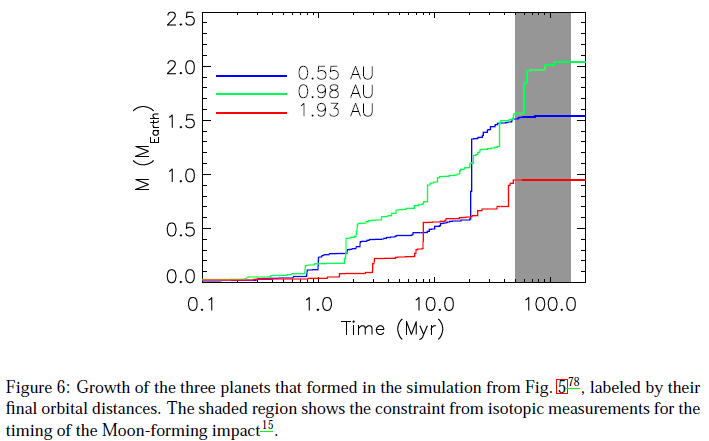
Here is an animation of Solar System Formation (3.84 Mb) (source). Here is another animation of Solar System Formation (1.94 Mb) (source).
©2017, Kenneth R. Koehler. All Rights Reserved. This document may be freely reproduced provided that this copyright notice is included.
Please send comments or suggestions to the author.